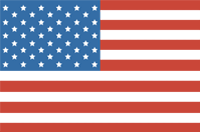'Hooks had a political scorecard, and everything — really, everything — could be tallied on it.' Photo: Getty.
The era of Nineties political correctness, when the Left concentrated its energies on the imposition of new euphemisms, has well and truly passed. Even its more recent revival in the form of “wokeness” seems only a memory in an era when one is far more likely to be “cancelled” (or rather, deported or imprisoned) for criticism of Israel than scepticism about once-fashionable ideas of gender. Political correctness and wokeness each left behind some changes to university syllabuses and a few shibboleths to separate progressives from their foes. But as long as the former lack a substantive notion of “progress”, they will be tempted to revert to the symbolic purification of social norms. Looking back to that earlier era of political correctness, perhaps, can alert us to dangers that linger in our post-woke era.
One of the most important representatives of that bygone PC era is back in the press: the African-American feminist critic Bell Hooks, (1952-2021) whose writing on art and politics has been recently reissued as a Penguin Modern Classic. Originally published in 1995, Art on My Mind: Visual Politics helped put in circulation a set of concepts that have since become, we might regret, part of both academic and middlebrow criticism. From “problematic” and “cultural appropriation” to “palimpsest” and “the politics of the visual”, her theoretical vocabulary remains current on the cultural Left, far beyond the specific intersectional feminism and anti-capitalist thought in which Hooks was most grounded. Even as the resurgent American Right, for all its supposed populism, reprises those signature economic policies of Reagan that Hooks railed against, her views on art and culture might now offer it some warning.
To get an insight into her contradictory desires and demands on art, it is helpful to start with her name. Hooks, who died in 2021, was born Gloria Jean Watkins and re-named herself in honour of her great-grandmother. For some decades in the late 20th century, a number of prominent African-American intellectuals and celebrities, such as Malcolm X (Malcolm Little) and Muhammad Ali (Cassius Clay), took on new names to express their sense of distance from the dominant white establishment. More generally, giving oneself a new, chosen name, even outside of any obviously political context, is an act of self-determination and experimentation that it seems rude for others to begrudge (even if the name is cringe). But Hooks also insisted on having her name spelled in lower-case, supposedly to draw attention away from herself and towards her work. This is, of course, an awfully ostentatious way to be humble.
While I think civility requires us to call somebody, say, called “Jennifer” “Jen” (or, for that matter, “John”) if that’s what she wants to be called, civility still has its limits. One of the reasons for both the overreach of and subsequent backlash against PC culture in the Nineties and wokeness today is that polite, well-meaning liberals prove again and again unable to admit this. Just as I’m not going through the grammatical inconvenience of using Judith Butler’s preferred “they/them” pronouns to refer to, well, her, neither am I going to irritate Spellcheck by decapitalising “Bell Hooks”. We can refuse requests for attention, deference, and extra-delicate care, even minor ones, even ones made by members of disadvantaged groups, without thereby enrolling ourselves on the side of Reaction. Besides the truly political choices we have to make about who is included in our communities and what is owed to them, there are many decisions of far lower stakes in which our moral status is not at issue.
Hooks’ thinking about art, and much else besides, turned on her shifting, troubled thinking about the boundaries between these two kinds of choices. On the one hand, she wanted art to be many things that are not political, and that are indeed likely to appear incompatible, or at least in tension, with being political: personal, excessive, transgressive, and sensuous. “Political art” as a phrase, conjures up images of propaganda posters with simple, unambiguous messages, commanding audiences to buy war bonds, unite with workers throughout the world, or otherwise fall in line. Defending artists she admired, like the sculptor Alison Saar, from critics who found their work insufficiently engaged with representing the problems of African-American life, Hooks argued that providing expansive and enfranchising sites of pleasure is its own sort of political work. It’s an argument that at times seems convincing, and at other times seems no more than an alibi to protect unpolitical beauty. Her prose, too, could slip into lyrical self-indulgence and celebration of irresponsibility. An essay, “Women Artists: The Creative Process”, begins charmingly:
“I am a girl who dreams of leisure, always have. Reverie has always been necessary to my existence. I have needed long hours where I am stretched out, wearing silks, satins and cashmeres, just alone with myself, embraced by the beauty around me. I have always been a girl for fibers, for textiles, and for the feel of comforting cloth against my skin. When I have adorned myself just so, I am ready for the awesome task of just lingering…”
This lovely evocation of herself covered in blankets on the couch leads, improbably, to musings on what her writing and thinking owe to the white men of the Black Mountain school, one of the main scenes of 20th-century avant-garde poetry in the United States. One is reminded of Robert Duncan, who expanded the range of American poetry, linking the open, vatic rhetoric of Walt Whitman with the erudition and syntactical innovation of Ezra Pound and Louis Zukofsky. It is one of those stirring, thought-provoking essays where the reader really cannot know what will come next, and even one thoroughly prejudiced against PC sacred cows will find himself surprised and disarmed.
But Hooks, like almost all of us, wanted art to be something other than a domain where we can linger in pleasure and surprise. Only the most radical aesthete approaches the museum, cinema or magazine rack without some desire, conscious or not, to find among the images displayed something that will be good for a community of which he is a member (which might be as small as himself, or as large as humanity). We might, if we are liberals of a certain kind, hope for art that is so beautiful and so apparently unpolitical that it distracts its beholders from the clash of polemics that constitute our unending “culture wars” — but this too is really a wish for art to serve a political end (the end of suspending politics).
Hooks wanted art to be a political force by which desirable representations of minorities would be disseminated, and structural inequalities exposed and challenged. Throughout Art on My Mind, she praised artists who seemed to produce such images, and attacked those who she sees as trafficking in negative stereotypes or in giving too much attention to white, male, etc., artists, critics and institutions. Hooks had a political scorecard, and everything — really, everything — could be tallied on it.
She blasted, for example, the painter Jean-Michel Basquiat as a sell-out whose art and “life” she alleged amounted to a “minstrel show” for wealthy white art patrons. Still more deliriously, she criticised Black basketball star Michael Jordan for appearing alongside Loony Tunes characters: “In the commercials where he speaks to the cartoon figure of Bugs Bunny as though they were equals — peers — his elegance and grace of presence is ridiculed and mocked.” Whatever one might think about Basquiat’s art (to my mind, neo-expressionist crap making lazy “references” to history, worth throwing in the dumpster of Eighties mistakes with Julian Schnabel and Anselm Kiefer) or Space Jam, it seems at best highly debatable that their success was driven by anti-black racism.
Conservatives today who roll their eyes at such dubious, over-the-top analyses should keep in mind that there are thousands of YouTube video essays and tens of thousands of lengthy X threads in which hysterical white men denounce the super-abundance of racial minorities in advertisements and super-hero movies. Still more embarrassingly, Right-wing intellectuals such as Stephen Adubato desperately try to attribute political significance and “based” messages to the work of Andy Warhol and Bad Bunny, while Matt Walsh bemoans that the Left “hates beauty” (an accusation that unfortunately invites reflection on his own appearance). Even as cultural critics on the Right have bemoaned that a censorious, tediously insistent sort of progressive politics has stifled creativity in the arts, and fantasise that the “not Left” is a freer and more expressive space for beautiful, non-political art, the cultural Right remains mired in the contradictory logics of the old PC Left.
This will make it, perhaps, difficult for the Right to grapple with its recent success. In the United States and elsewhere, whether by winning elections or shifting the terms of political debate, the Right has won a number of victories that may add up to a reconfiguration of common sense on matters ranging from immigration to gender. Recent sympathetic New York Times profiles of figures like Curtis Yarvin and Jonathan Keeperman demonstrate that just as powerful mainstream institutions once ushered into the spotlight black, feminist, and other culturally Left radicals, now they pivot to integrate spokesmen of the far-Right.
Much of Art on My Mind finds Hooks obstinately, seethingly, refusing to acknowledge that by the Nineties liberal institutions, and a broad American public, even amid the rollback of New Deal and Great Society-era progressive economic policies, were eager for black art and culture. And that even included works that seemed thoroughly oppositional, sometimes hostile, to the white audiences who loved them. Amid this confusing conjuncture of economic, political and cultural shifts, Hooks often held to a narrow, unenlightening opposition between sell-out artists and intellectuals who allowed themselves to be thus commodified, and stalwart resisters who refused the compromises success demanded. Yet often, in both the eras of PC and woke, what white critics and audiences most desired was black art (and writing — witness the success of Hooks herself) that declared itself to be in the latter category.
The spiral of denunciations against supposed sell-outs only disguises the fundamental dynamics by which the liberal establishment periodically wobbles from Right to Left by co-opting yesterday’s radicals. At least since Trump’s first election almost a decade ago, Right-wing intellectuals find themselves regularly attacked by former fans, and each other, not only as “sell-outs” but often as “feds”, “glowies”, and other terms suggesting they are only a controlled opposition actually serving the establishment. In this respect, and in its constitutive tension between a wish to save “beauty” from politics and a wish to politicise beauty on its own behalf, today’s Right is heir to Hooks. If only the boys at Passage Press shared her dream of leisure!









Join the discussion
Join like minded readers that support our journalism by becoming a paid subscriber
To join the discussion in the comments, become a paid subscriber.
Join like minded readers that support our journalism, read unlimited articles and enjoy other subscriber-only benefits.
Subscribe